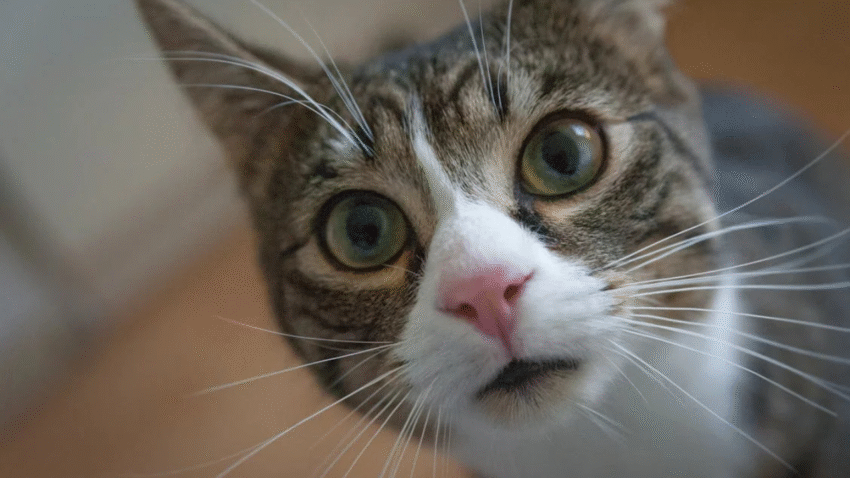Introduction
Feeding your kitten the right way from the start is one of the most important parts of raising a healthy and happy cat. In this guide, you’ll learn how to feed your kitten based on its age and size, what types of food are best, how often to feed, and how to avoid common feeding mistakes. Struggling to figure out how much your kitten should eat or when to change their food? You’re in the right place.
Why Feeding Based on Age and Size Matters for Kittens
Kittens grow rapidly in their first year, and their nutritional needs change dramatically along the way. Feeding a kitten too little can lead to underdevelopment and health issues, while feeding too much or offering the wrong food can result in obesity and digestive problems.
Just like with human babies, a “one-size-fits-all” approach doesn’t work when it comes to kitten nutrition. Their age, weight, and activity level all influence the type, amount, and frequency of food they need. Proper feeding supports immune health, bone development, brain growth, and more.
Step-by-Step Guide to Feeding Your Kitten Based on Age and Size
Step 1: Understand Kitten Growth Stages
0–4 Weeks (Newborn)
- Feed: Mother’s milk or kitten milk replacer (KMR)
- Feeding method: Bottle feeding every 2–3 hours
- Solid food: None yet — digestive system still developing
4–8 Weeks (Weaning)
- Feed: Gradually introduce wet kitten food mixed with KMR
- Feeding frequency: 4–5 times per day
- Tip: Use shallow dishes to help them transition from the bottle
2–3 Months
- Feed: High-quality wet kitten food; introduce dry food if desired
- Amount: About 200–250 calories/day depending on breed/weight
- Frequency: 4 meals per day
3–6 Months
- Feed: Wet and/or dry kitten food (must say “kitten formula”)
- Amount: 250–300 calories/day, depending on growth
- Frequency: 3–4 meals per day
6–12 Months
- Feed: Continue with kitten food until your vet recommends switching
- Amount: 250–350 calories/day depending on size and activity
- Frequency: Reduce to 2–3 meals per day
Over 12 Months (Adult Transition)
- Switch gradually to adult cat food
- Reduce meal frequency to twice daily
Step 2: Choose the Right Type of Food
- Wet Food: Ideal for hydration, easier to chew, better for picky eaters.
- Dry Food: Convenient, can help reduce plaque buildup, but must be high quality.
- Combination Feeding: A popular approach — wet food for one meal, dry for another.
- Look for labels that say “complete and balanced” and specifically formulated for kittens.
Step 3: Adjust Portions Based on Size and Weight
Use your kitten’s weight and activity level to adjust portions:
- Small kittens (1–2 lbs): 100–150 calories/day
- Medium kittens (2–4 lbs): 150–250 calories/day
- Large kittens (5–8 lbs): 250–350 calories/day
You can check food packaging for calorie content and divide the daily requirement by the number of meals.
Step 4: Monitor and Adjust Regularly
- Weigh weekly: Kittens should gain around 0.25–0.5 lbs per week.
- Check body condition: You should be able to feel, but not see, the ribs.
- Adjust food if your kitten is underweight or gaining too fast.
Common Mistakes to Avoid
- Feeding adult cat food too early
Adult food lacks essential nutrients kittens need for development. Stick with kitten food until your vet approves the switch. - Free-feeding without monitoring weight
Leaving food out all day can cause overeating. Scheduled meals are better, especially for tracking intake. - Ignoring hydration
Kittens on dry food may not drink enough. Always provide fresh water, and consider wet food for added moisture. - Too many treats
Treats should make up less than 10% of daily intake. Overdoing it can unbalance their diet. - Sudden diet changes
Switch foods gradually over 7–10 days to avoid upset stomachs.
Extra Tips & Recommendations
- Use a kitchen scale to weigh food portions accurately.
- Create a meal routine at the same times daily to regulate digestion and behavior.
- Visit your vet for personalized feeding recommendations, especially for underweight or large-breed kittens.
- Link: Check out our article on [How to Switch Your Cat’s Food Safely Without Stomach Issues] for a smoother transition process.
Conclusion
Feeding your kitten the right way starts with understanding their age and size, then tailoring your food choices, portions, and meal schedule around those needs. A well-fed kitten is more likely to grow into a healthy, active, and well-behaved adult cat.
Take your time to observe your kitten’s growth, adjust as needed, and consult your vet for any concerns. You’ve got this!
